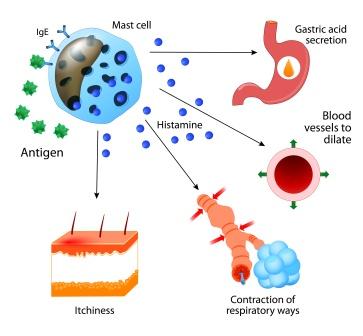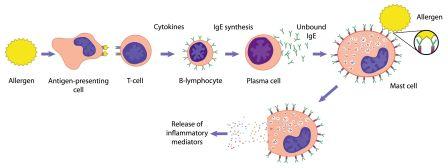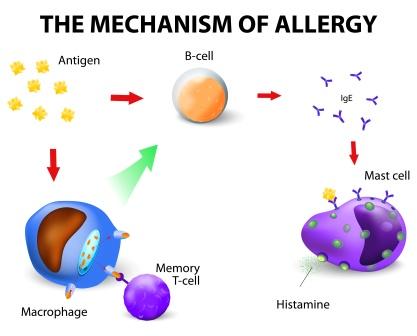Itching, Pruritus: Causes, Mechanism, Diagnosis, Treatment, Research
Article by Dr Raghuram Y.S. MD (Ay)
Itching or scratching our body is not new for us. This is a frequent complaint which we all have experience right from a short lived itch of mosquito bite to a severe and long standing itch stubborn to all the medications as experienced in diseases like psoriasis and eczema.
Table of Contents
What is Itch?
Itching is a sensation that causes a desire (reflex) to scratch one or the other part of our body. It is obviously an unpleasant sensory sensation and is said to have similarities to pain by modern science. Pruritus is the medical term for itch.
Infections, bites and stings, infestations, chronic diseases, allergic reactions, sun exposure and dry skin are the important causes among various causes of itching
Itches can be localized (limited to one area of the body) or generalized (occurring all over the body or in several different areas of the body). Sometimes itching may be worse at night, depending on the underlying cause. Itches can also occur with or without skin lesions (bumps, blisters, rash, redness or abnormalities that can be seen on the skin).
- Description of disease – what actually happens in general terms.
- basic definition, general symptom as per modern
- Lifestyle Tips & Home Remedies
- Rest of Modern aspect like diagnosis, prognosis, treatment etc
- Ayurvedic correlation, causes, symptoms, types as per Ayurveda, differential diagnosis
- Ayurvedic treatment principles + Useful Panchakarma procedures
- Useful Herbs,
- Useful medicines – traditional, proprietary
- Your experience with these medicines and treatments
- Role of Ayurveda + Limitations (Ayurveda promise for the disease + frank and straight opinion)
Signs and symptoms
Signs and Symptoms of Pruritus –
Scratching is the most important symptom of itching or pruritus.
Itching usually depends upon the underlying cause, condition or lesion.
Most commonly these associated findings include skin lesions such as rash, blisters, bumps or redness of the affected areas. Dryness of the skin is the most common cause of itch.
Itching can lead to tears in the skin (excoriations) from scratching.
Less commonly, generalized itching all over the body can be a sign of chronic medical conditions such as liver disease, with no obvious changes to the appearance of the skin.
Pain and itch are both unpleasant sensations. But they have different behavioural patterns. Pain causes ‘withdrawal reflex’. This leads to retraction. Therefore pain is a reaction trying to protect an endangered body part. Itch causes a ‘scratch reflex’. In this our attention is drawn to the affected skin site.
Scratching to get relieved by itch sensation –
Itch generates stimulus of a foreign object on our skin or beneath it and also the urge to remove it.
Scratching has been regarded as a way to relieve oneself by reducing the annoying itch sensation.
Scratching is sometimes pleasurable –
Generally it is seen that one scratches until the unpleasant itching sensation disappears. But some patients having chronic itching (example, atopic dermatitis or psoriasis) would find scratching pleasurable. These people would scratch the affected parts until they no longer produce pleasant or painful sensation.
Read related: Diet And Ayurvedic medicines For Itching
Causes
What causes itching?
Infections:
- Allergic reaction to specific chemicals such as urushiol, poison oak etc found in many foods and fragrances
- Body louse – they are usually found in substandard living conditions
- Cutaneous larva migrans – skin disease
- Head lice
- Herpes
- Insect bites (mosquitoes, chiggers etc), stings
- Photo-dermatitis – sunlight (prolonged exposure to UV radiation) reacts with chemicals in the skin and leads to formation of irritant metabolites
- Pubic lice (genital areas)
- Scabies
- Shaving
- Swimmers itch
- Varicella – i.e. chickenpox (young children)
- Genital infections (sexually transmitted diseases or STD’s, vaginal yeast infections, fungal infection of the crotch or tinea cruris) – genital itch with burning and pain, anal itch
Environment and allergy:
Urticaria (hives)
Irritation from fabrics, cosmetics or other substances
Read related: Urticarial Rashes – Ayurvedic Understanding And Treatment Options
Itching as symptom
Skin disorders with itching as a symptom:
- Dandruff – flaking in the skin of the head (scalp)
- Punctuate palmo-plantar keratoderma – disease characterized by abnormal thickening of the palms and soles
- Scab healing
- Scar growth
- Development or emergence of moles, pimples and ingrown hairs from below the epidermis
- Skin conditions – psoriasis, eczema, sun-burn, athlete’s foot and hidradenitis suppurativa
- Xerosis – dry skin (seen in winter, associated with old age, frequent bathing in hot showers, high temperature environments, low humidity environments etc)
Other disorders that may cause itching:
- Diabetes mellitus – metabolic disorder characterized by high blood sugar
- Hyperparathyroidism – excess production of parathyroid hormone (PTH)
- Iron deficiency anaemia – characterized by low red blood cell or haemoglobin levels
- Jaundice and cholestasis – characterized by high bilirubin
- Malignance (internal cancer) – example lymphoma or Hodgkin’s disease
- Menopause – changes in hormones at the end of periods in women
- Polycythaemia – characterized by increased histamines
- Thyroid illness
- Uraemia – causes itching called uraemic pruritus
- Psychiatric disease – called as psychogenic itching
Medication:
Drugs like opiods, Chloroquine etc
Related to Pregnancy:
Gestational pemphigoid – a dermatosis of pregnancy
Intrahepatic cholestasis of pregnancy
Pruritic urticarial papules and plaques of pregnancy (PUPPP)
Mind factors –
Stress (causes or aggravate itch)
Anxiety
Other emotional problems
Read related: Best Natural Medicine For Anxiety: Courage
Generalized itching without rashes or specific skin changes –
- Dry skin (xeroderma)
- Metabolic and hormonal disorders (example kidney disease, hyperthyroidism etc)
- Cancers (example lymphoma)
- Drug reactions
- Interruptions to bile flow (cholestasis) from liver diseases
- Blood diseases (example polycythaemia rubra vera)
Mechanism of itching
The origin of itch takes place in:
Peripheral nervous system (dermal of neuropathic) or in
Central nervous system (neuropathic, neurogenic or psychogenic)
On this basis, the itching can be classified as –
Dermal or pruritoceptive itch:
This type of itch originates in the skin. It can be induced by variety of stimuli including mechanical, chemical, thermal and electric stimulation. The primary afferent neurons responsible for histamine induced itch are unmyelinated C-fibres. Itch receptors are found in the top layers of the skin.
Neuropathic itch:
It is a result of damage of the nervous system. This type of itch can originate at any point along the afferent pathway. Damages include diseases or disorders in the central nervous system or peripheral nervous system. Examples of this type of itch are nostalgia paraesthetica, brachioradial pruritus, brain tumours, multiple sclerosis, peripheral neuropathy and nerve irritation.
Neurogenic itch:
It is a type of itch which is induced centrally but there will be no neural damage. It is mostly associated with increased accumulation of exogenous opioids and synthetic-opioids.
Psychogenic itch:
Itching is associated with some symptoms of psychiatric disorders such as tactile hallucinations, delusions of parasitosis or obsessive compulsive disorders (OCD)
Peripheral sensitization:
Inflammatory mediators such as bradykinin, serotonin (5-HT) and prostaglandins are released during a painful or pruritic inflammatory condition. These mediators activate pruriceptors and cause acute sensitization of nociceptors. Expression of Neuro Growth Factors (NGF) cause structural changes in nociceptors (sprouting). NGF is high in injured or inflamed tissue. Increased NGF is found in atopic dermatitis. NGF regulates neuropeptides, mainly substance P. Substance P induces pain and causes acute sensitization. It may contribute to itch by increasing neuronal sensitization and may affect release of mast cells. These mast cells contain granules rich in histamine.
Central sensitization:
It is produced due to noxious input to the spinal cord. It consists of allodynia, exaggeration of pain and punctuate hyperalgesia, extreme sensitivity to pain.
Brachio-radial pruritus is a neurological condition. It leads to intense itching of arms. It usually develops on the forearm, over the head of brachioradialis muscle. It can also occur anywhere on the upper extremities. This is often caused by an irritated or a pinched nerve in the neck region.
Read related: Pruritus (Kandu) : Ayurvedic Treatment Principles

Why do we scratch an itch impulsively?
We are made up of nerves. Some nerve fibres are sensitive to touch, pain, or itch.
‘Itching’ nerve fibres are activated when they detect histamine.
During allergic reactions, our bodies release a protein called ‘histamine’ which is transferred to the brain via the spinal cord.
Histamine causes inflammation and is meant to help the body fight infections (example from bites or abrasions).
Multiple areas of the brain including those that control emotional, sensory and motivational patterns are all activated by the itch sensation.
Antihistamines disable the protein from telling the brain about the itch and help us stop scratching.
A study from the British Journal of Dermatology found that scratching reduces activity in the anterior and posterior cingulated cortices in the brain, causing pleasure.
But most dermatologists suggest to keep scratching to a minimum to prevent skin damage.


Diagnosis
Diagnosis of Pruritus:
Diagnosis of Pruritus is done on the basis of:
Careful and thorough medical history
Physical examination
Diagnostic tests to detect the primary disorders which have caused itching including blood tests, radiology, imaging tests etc
Skin biopsy in skin lesions causing itch.
Specialists dealing with itching –
Different medical practitioners of different specialities can be involved in treating itching. This is because the causes of pruritus are so many in number. The below said specialists may have a look at the itching and attend it:
- Specialists in family medicine
- Paediatricians – itching in kids
- Dermatologist – skin specialists
- Allergist or immunologist – itching related to allergies and immune variations
- Gynaecologist or urologist – itching related to STD’s
- Obstetrician or Gynaecologist – itching in women during pregnancy, vaginitis etc
- Specialists in various specialities like endocrinologists, gastro-enterologists, nephrologists, oncologists, haematologists, neurologists, specialists of emergency medicine etc – itching caused by various chronic diseases
Should you scratch or not, when you have itching?
Itching or pruritus usually will prompt you to scratch the affected part. Many times you would never find relief until you would have scratched the itching area. This can lead to a vicious itch-scratch-itch cycle.
Initially scratching will be satisfying. But prolonged scratching will leave you with irritated skin. The irritated skin can itch further and often worsen the picture. Scratching provides only temporary relief. It doesn’t cure the problem or doesn’t promote healing of the underlying problem. Therefore it is best to avoid scratching to the possible extent.
If scratching breaks open the skin, bacterial infection can set in (secondary infection). If the scratching continues for many months or years, the area that is scratched may develop thickened skin (lichensification) or pigmentation that darkens the area.
The best way to allow irritated skin to heal is to stop scratching it. Many times it has to be managed with will power. However it will not be enough since the urge to scratch can be really compelling.
Read related: Itching And Pruritus: Ayurvedic Understanding
Treatment
Treatment:
Non chemical remedies:
Warming, Cooling. Soft stimulation
Topical antipruritics – creams and sprays (available over-the –counter) relieve itching
Oral anti-itch drugs (usually prescribed), the ingredients of which belong to:
Antihistamines
Corticosteroids (hydrocortisone topical cream)
Counter-irritants – mint oil, menthol, camphor etc
Crotamiton – anti-pruritic agent available as a cream or lotion (used in scabies)
Local anaesthetics
Phototherapy – in severe itching
Back scratcher – to relieve local itch
Skin moistures and emollients – for dry skin, to maintain the moistness
Epidemiology –
Approximately 280 million people globally, 4% of population, have difficulty with itchiness. This is comparable to the 2-3% of the population suffering from psoriasis.
Research studies
Studies, Researches and other aspects of pruritus:
Contagious itch: Studies show that itching and scratching were induced by visual stimuli in a public lecture on itching. (Similarly a sensation of pain can be induced often by listening to description of an injury). A hypothesis tells that a human mirror neuron system exists. In this mirror we imitate certain motor actions when we view others performing the same action. (Similar process happens in contagious yawning).
Studies have shown that itch can be inhibited by many other forms of painful stimuli such as noxious heat, physical rubbing / scratching, noxious chemicals and electric shock
The beta carotene and other antioxidants present in the red and orange foods like sweet potatoes, cantaloupe and red bell peppers aid in the protection of skin from sun damage by building up in the skin and forming a protective barrier. Eating at least 5 servings of colourful fruits and vegetables per day is good for health and skin.
Read related: 41 Natural Home Remedies For Itching And Pruritus
Studies – show that mineral rich spring waters relieves pain from burns and rashes; it is used to treat itching and redness following laser skin surfacing. Christopher Dannaker, MD, an assistant professor of dermatology, University of San Francisco tells ‘Mist it onto irritated skin and its trace minerals will work as anti-inflammatories’. He also says ‘To soothe skin instantly, spritz yourself with European mineral water, San Pellegrino for example’.
Studies show that itch receptors are found only on the top 2 skin layers, i.e. the epidermis and the epidermis-dermis transition layers. Shelley and Arthur later found that maximal sensitivity was found in the innermost layer of epidermis. Surgical removal of these skin layers removed the itch perception. Itch is not felt in muscle or joints. This strongly suggests that deep tissue probably does not contain itch signalling apparatus.
Consult Dr Raghuram MD (Ayu)










One comment
Dr J V Hebbar MD(Ayu)Author
If itching is arising due to infection + if there are secretions, then triphala + neem is useful.
If it is arising as an allergic reaction, then triphala + turmeric or neem + turmeric makes more sense.